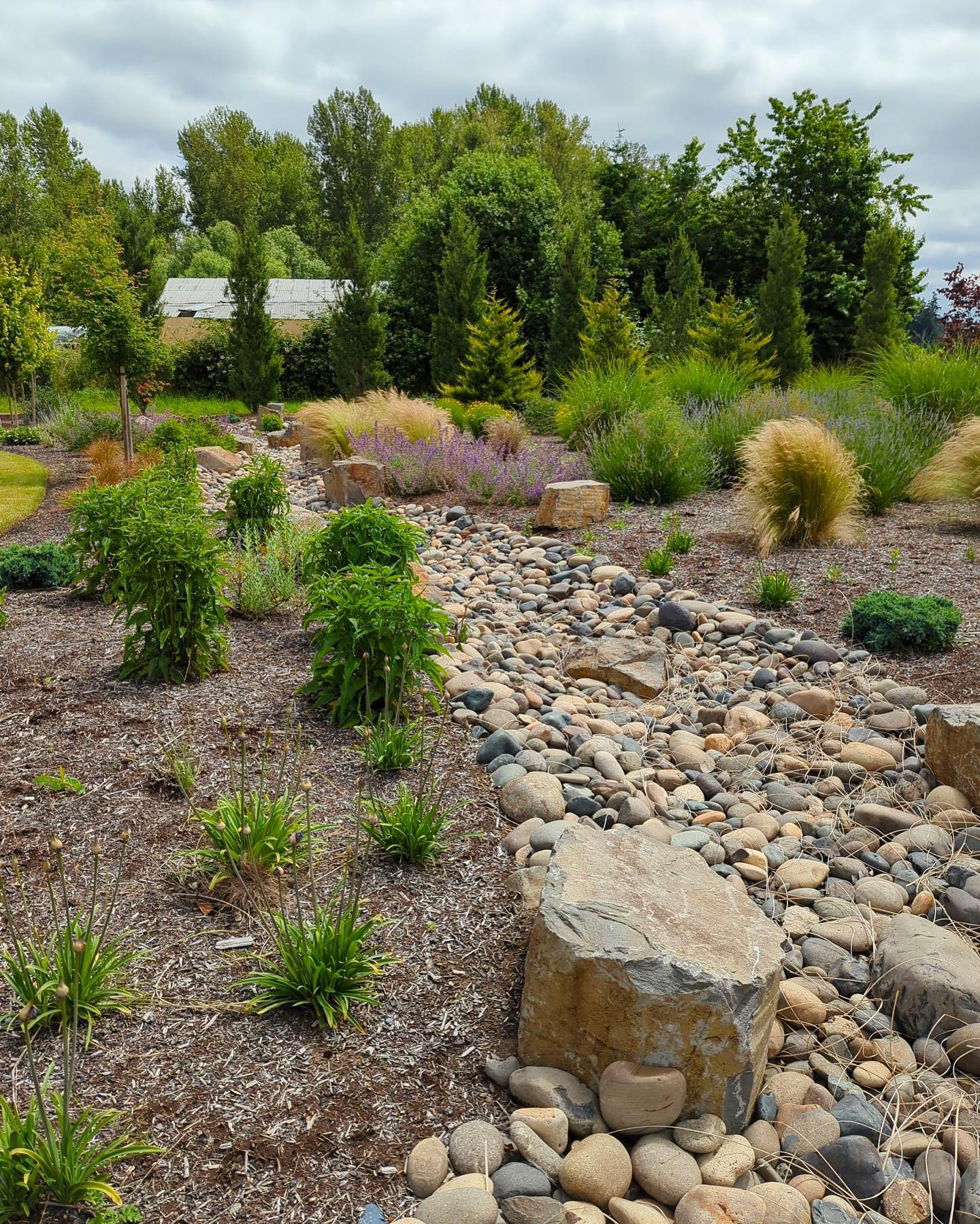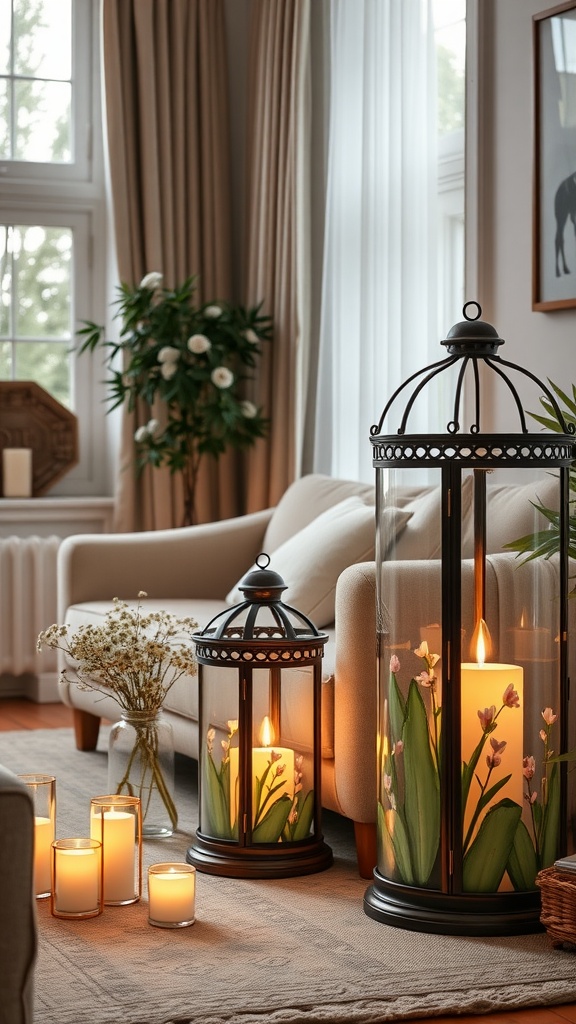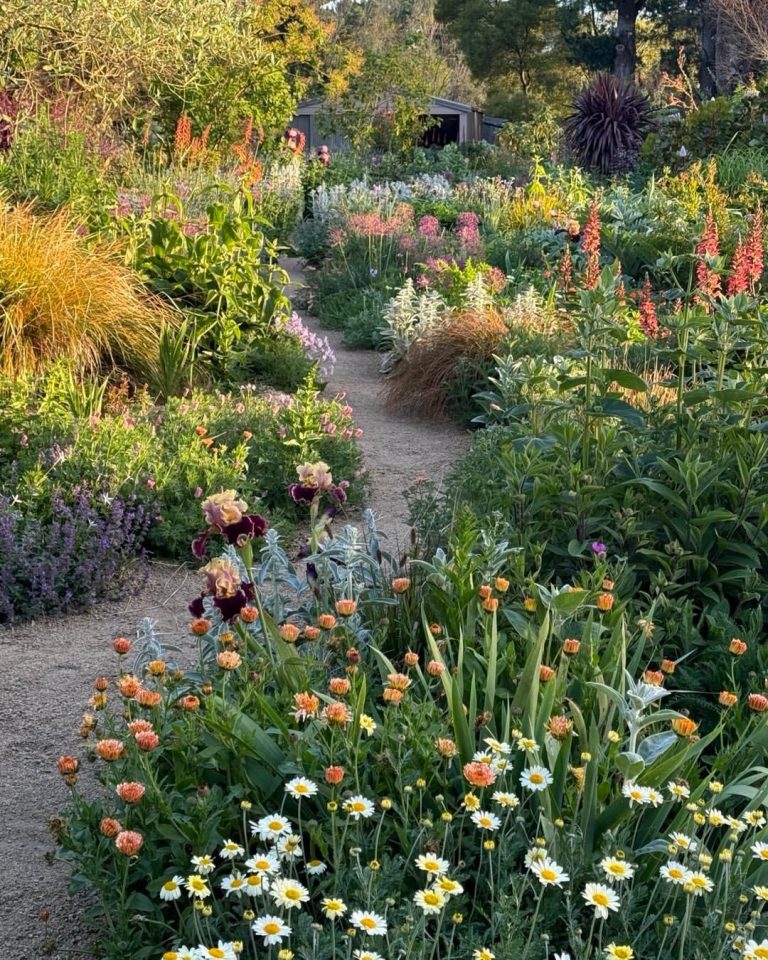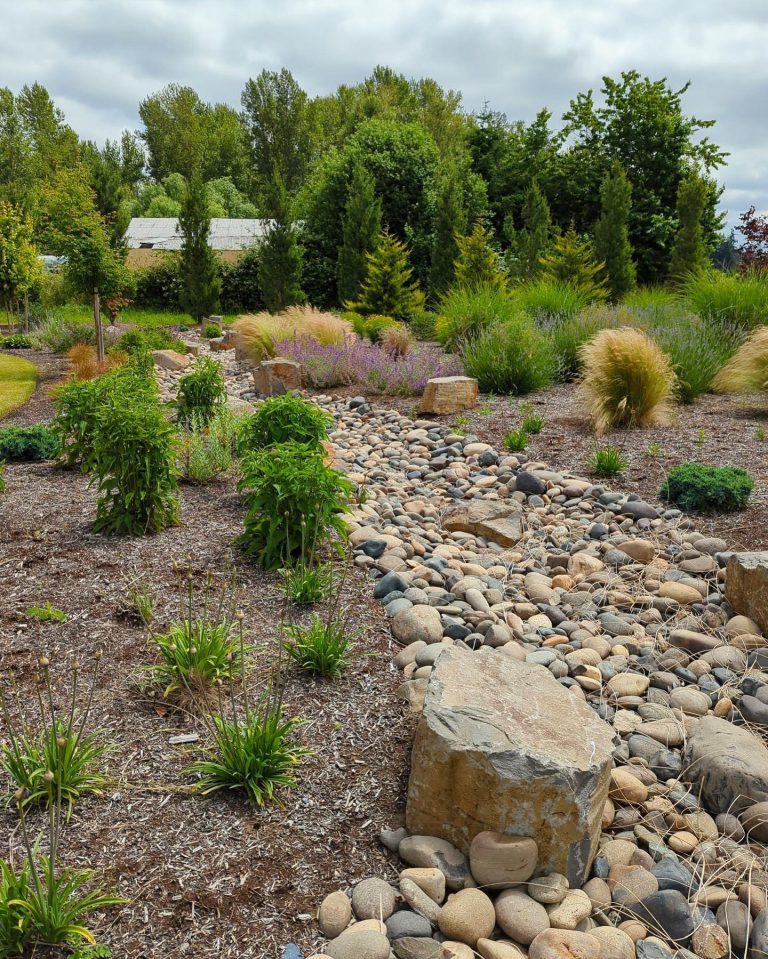15+ Downspout Runoff Ideas That Are Beautiful and Functional
Are you tired of soggy patches in your yard or worrying about water damage around your foundation every time it rains?
If you’ve got rain gutters but no good plan for handling runoff, don’t worry—you’re far from alone. The good news? There are tons of creative, stylish, and super effective ways to manage downspout runoff that won’t just protect your home—they’ll make your outdoor space look amazing, too.
We’ve rounded up over 15 inspiring ideas that blend beauty with function, so you can say goodbye to water woes and hello to a home exterior that turns heads. Whether you’re into outdoor living, modern patio furniture, back porch decor, or simply want your landscape to look its best, there’s something here for every style and budget.
1. Rain Barrels – Store Water, Save the Planet
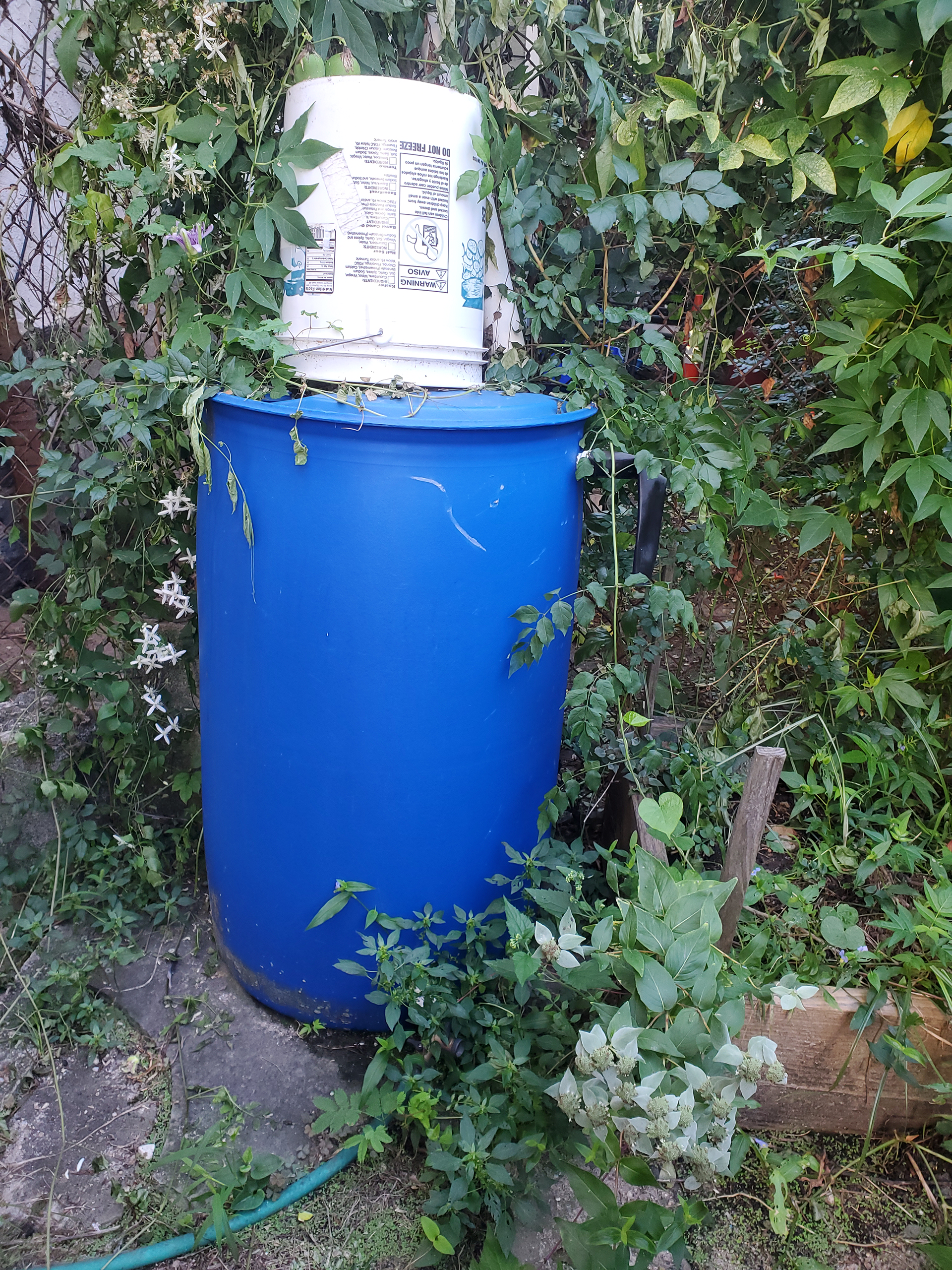
One of the most popular and environmentally friendly solutions for downspout runoff is the trusty rain barrel.
A rain barrel is a large container placed at the base of your downspout to catch rainwater. Once collected, you can use that water to hydrate your flower beds, water your vegetable garden, or fill up a watering can for your houseplants. It’s an easy, sustainable way to cut down on water waste and reduce your utility bills—especially during summer dry spells.
Rain barrels come in all shapes and sizes—from rustic wood finishes to sleek modern designs that blend perfectly with your modern back porch ideas or farmhouse chic decor. Some even include spigots, mesh covers (to keep out mosquitoes and debris), and hose attachments.
Installation is typically DIY-friendly, and many local municipalities offer rebates for using them.
Beyond being eco-friendly and practical, rain barrels can also be surprisingly stylish. Add a trellis, climbing vine, or even a painted mural for a decorative flair that turns utility into a garden feature.
2. Rock Beds – A Natural, No-Fuss Solution
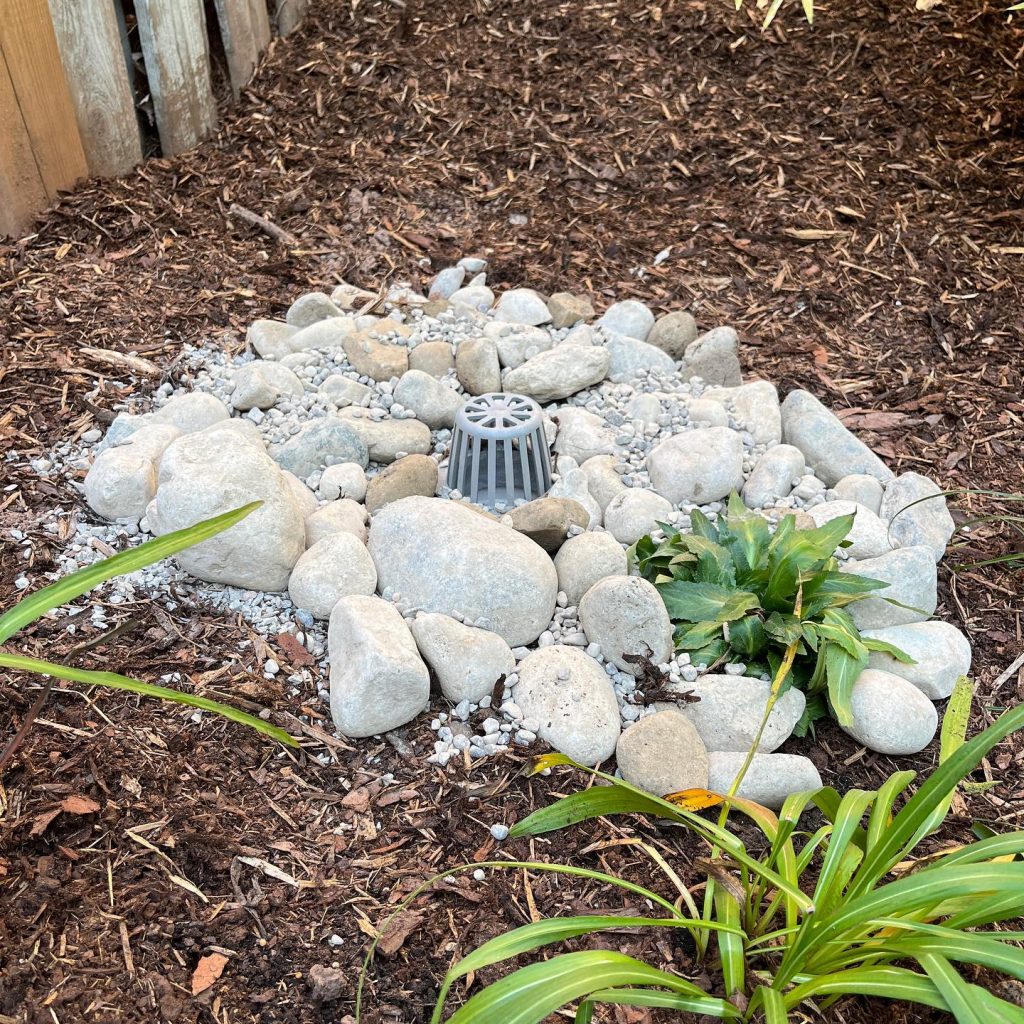
Rock beds are a go-to option for homeowners looking for a low-maintenance, visually appealing way to manage runoff.
The concept is simple: instead of letting water pool near your foundation, guide it away using a shallow channel lined with rocks or gravel. These rock beds not only direct water safely but also add texture and beauty to your landscaping. They’re especially effective in areas with frequent rainfall or sloped yards, helping slow water flow and prevent erosion.
You can create a winding stone bed that snakes its way through your backyard or install one that disappears beneath modern patio furniture and back porch decor elements for a seamless look.
Want to step it up? Incorporate larger boulders, ornamental grasses, or solar-powered lights to elevate the design and make it a centerpiece of your outdoor living space.
Rock beds are long-lasting, inexpensive, and a great way to harmonize practicality with curb appeal.
3. Rain Chains – Functional and Fabulous

Looking for a downspout alternative that’s both elegant and functional?
Rain chains might be your perfect match. Originating in Japan, these charming features replace the traditional downspout with a chain, cup, or link system that gently guides rainwater from your gutter to the ground or into a container below.
The visual appeal is undeniable. As water flows down the chain, it creates a soothing sound—like a mini waterfall—that adds a spa-like vibe to your outdoor space. Pair it with a decorative basin, ceramic pot, or even a small rock garden at the bottom to manage runoff in style.
Rain chains are ideal for homeowners who want to combine practicality with outdoor decor. They work beautifully with modern back porch ideas and can easily be incorporated into zen gardens, cottage landscaping, or even industrial-chic exteriors.
Plus, they’re surprisingly easy to install and are available in materials like copper, brass, and stainless steel to match your home’s aesthetic.
4. Dry Creek Beds – Landscaping Meets Drainage
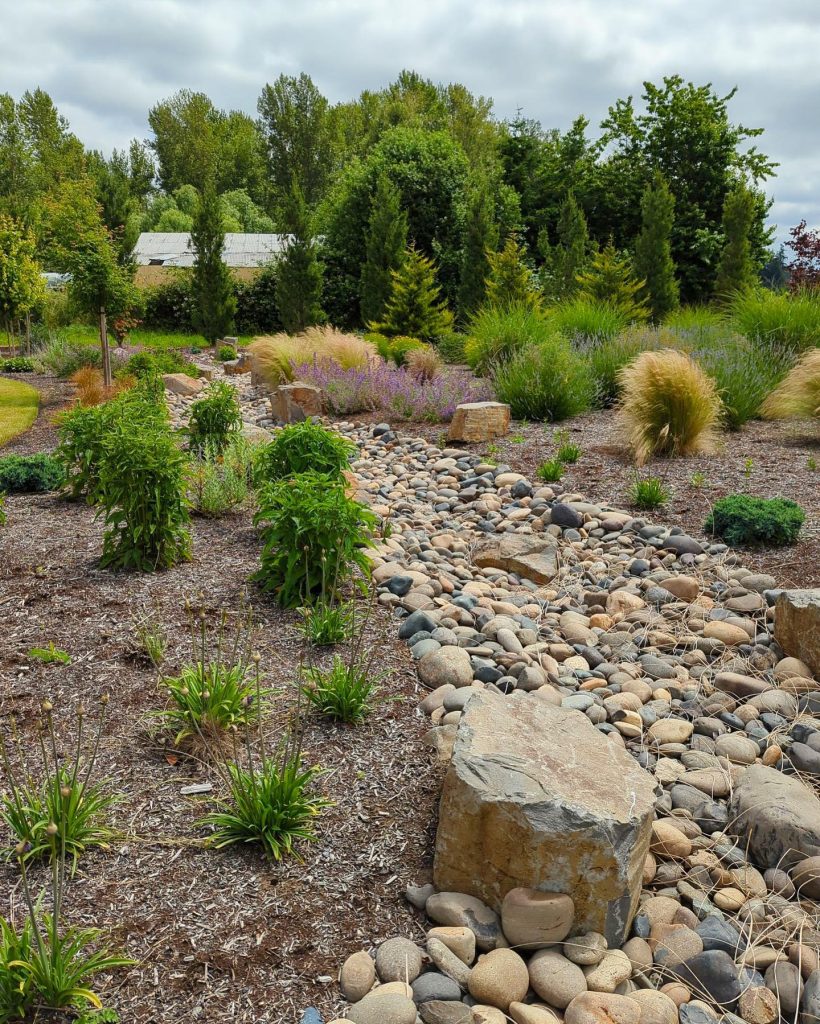
Source
Dry creek beds are a landscape designer’s dream and a homeowner’s secret weapon against runoff problems.
They’re essentially decorative trenches lined with rocks, gravel, and sometimes drought-tolerant plants. These dry beds mimic the appearance of natural streams, guiding rainwater away from your house during storms while remaining dry and stylish the rest of the time.
They’re especially effective for large yards or sloped areas where water tends to rush and erode soil.
To build one, you’ll dig a shallow path, line it with landscape fabric, and fill it with various-sized stones. You can even add bridges, logs, or lanterns to make it a true focal point. The best part? A dry creek bed can be the anchor for your entire garden design, seamlessly blending with flower beds, seating areas, or even modern patio furniture.
If you’re dreaming of a nature-inspired backyard or want a serene addition to your back porch decor, a dry creek bed is as functional as it is fabulous.
5. French Drains – A Classic Hidden Fix
Source
If you want an invisible, underground solution that gets straight to the point, French drains are a timeless classic.
This system uses a perforated pipe buried in a gravel-filled trench to channel runoff water away from your home. It’s perfect for areas where surface water just won’t go away and is especially helpful around basements, patios, or foundations prone to dampness.
Once installed, a French drain is practically invisible. You can cover it with turf, mulch, gravel, or even pavers, so it blends seamlessly into your landscape or outdoor living setup.
French drains require a bit more effort and planning—especially when digging and ensuring proper slope—but they’re one of the most effective long-term solutions for drainage problems.
Ideal for homeowners who want peace of mind without sacrificing aesthetics, French drains pair beautifully with modern back porch ideas and clean, minimalist landscaping.
6. Decorative Splash Blocks – Add a Touch of Charm
Source
Sometimes, the simplest solutions are the most effective—and that’s exactly what decorative splash blocks offer.
Placed at the base of your downspout, these angled blocks guide water away from your foundation and prevent soil erosion. The difference? Today’s splash blocks come in far more styles than the basic concrete rectangle of yesteryear.
From faux stone finishes to whimsical animal shapes and even hand-painted ceramic designs, splash blocks have become a fun way to add personality and functionality to your outdoor space.
They’re a great option if you want an affordable, no-dig solution that still offers some visual appeal. Choose one that complements your garden style, back porch decor, or patio furniture color scheme for a cohesive look.
This is also a great fix for renters or anyone wanting a temporary solution that doesn’t require major landscaping.
7. Rain Gardens – Let Nature Do the Work
Source
A rain garden is a beautiful, eco-conscious way to deal with excess runoff—especially if you love native plants and want to attract pollinators like bees and butterflies.
Rain gardens are shallow, plant-filled depressions in your yard where water is directed to collect and slowly absorb into the soil. They’re designed with specific plants that can tolerate both wet and dry conditions—like black-eyed Susans, switchgrass, and Joe Pye weed—making them both functional and wildlife-friendly.
Beyond helping manage runoff, rain gardens reduce pollutants, recharge groundwater, and require very little maintenance once established.
They’re perfect for adding a pop of color and life to the space around your porch or patio. You can even coordinate your plant choices with your outdoor living style, whether you’re into rustic farmhouse or sleek and modern back porch ideas.
Add some stepping stones or a cozy garden bench nearby and you’ve created a peaceful, purposeful retreat.
8. Gravel Trenches – Easy DIY Water Control
Source
Gravel trenches are another incredibly effective and budget-friendly way to manage downspout runoff.
This method involves digging a shallow trench from your downspout and filling it with crushed stone or gravel. As water flows through, it slows down and filters through the gravel before soaking into the ground—or being directed elsewhere.
It’s simple, low-maintenance, and can be done in an afternoon with basic tools. Want to get creative? Outline the trench with bricks or edging, or tuck it beneath modern patio furniture and garden decor to keep things tidy and stylish.
Gravel trenches are ideal for homes with flat yards where water tends to linger. Plus, the texture of gravel can complement everything from modern landscaping to cozy back porch setups.
With a little design flair, what starts as a utility feature can become a polished, purposeful element of your outdoor living design.
9. Underground Piping – Invisible but Effective
Source
If you’re looking for a clean, invisible way to handle downspout runoff, underground piping may be the sleek solution you’ve been searching for.
This method involves connecting your downspout to a buried pipe system that carries water away from your home’s foundation—often toward the street, a dry well, or a designated drainage area. Once installed, all you’ll see is the end of the pipe or pop-up emitter in the lawn, making this perfect for anyone who wants a flawless, polished yard with zero clutter.
It’s especially effective in neighborhoods where standing water or foundation flooding is an issue and works well in combination with modern landscaping or a clean-lined patio setup.
While it may require professional installation, the long-term benefits are huge: reduced erosion, zero visible runoff path, and enhanced curb appeal. Plus, it works quietly behind the scenes without disrupting your outdoor living area or back porch decor.
Pro tip: Coordinate the emitter location with your garden layout so it doubles as irrigation for shrubs or flower beds.
10. Water Feature Integration – Functional Art
Source
Why let all that rainwater go to waste when you can turn it into something truly beautiful?
Incorporating your downspout runoff into a water feature—like a bubbling fountain, pondless waterfall, or small backyard pond—is a genius way to blend form and function. As rainwater flows from your gutters, it’s directed into a designed basin or reservoir that becomes part of your landscape’s centerpiece.
This idea works beautifully with both traditional and modern patio furniture, turning your backyard into a tranquil oasis. Imagine sipping coffee on your back porch while listening to the gentle sound of flowing water—it doesn’t get more peaceful than that.
Many homeowners use hidden basins with recirculating pumps to keep things running even when it’s dry, ensuring the aesthetic holds up rain or shine. These features are perfect for corner gardens, patio edges, or spaces near pergolas and benches.
Bonus: They’re a magnet for birds, butterflies, and compliments from guests.
11. Raised Planter Boxes – Redirect & Reuse Water
Source
Raised planter boxes are a charming and practical way to manage runoff while giving your gardening game a serious upgrade.
By placing a series of raised beds directly in the path of your downspout, you can redirect rainwater into them and let the soil and plants soak it up naturally. This turns runoff into a resource, reducing water waste and nourishing your flowers, veggies, or herbs at the same time.
It’s also a great option if you’re short on space or want to bring some life to your back porch or patio. Raised planters come in all styles—from rustic wooden boxes to sleek metal containers that complement modern back porch ideas.
To get the most from this setup, make sure the soil drains well and choose moisture-loving plants like mint, basil, or marigolds. You can even layer gravel at the bottom for better drainage and root health.
Not only are you solving a runoff problem, but you’re adding lush beauty to your outdoor space—and what’s not to love about that?
12. Soaker Hoses – Water as You Drain
Source
If your garden always seems to need a drink, this downspout runoff idea is about to become your best friend.
Soaker hoses are long, porous tubes that slowly release water along their length. By connecting one to your downspout, you create a passive irrigation system that waters your landscaping every time it rains. It’s a fantastic way to hydrate beds, shrubs, or foundation plantings—especially during unpredictable weather.
This approach works best when the area around your downspout has multiple plants that benefit from consistent moisture. It’s ideal for cottage gardens, side yard flower beds, or any space where you want discreet watering without dragging hoses around.
Soaker hoses are incredibly easy to install and maintain, and they’re compatible with mulch, gravel, or even turf—so you can keep your landscaping tidy and on-trend. If you’re into eco-friendly living or love the idea of letting nature do the work, this solution is for you.
Pair with a rain barrel for the ultimate sustainable watering system.
13. Permeable Pavers – Driveway Meets Drainage
Source
Want to manage runoff and give your patio, walkway, or driveway a stylish makeover? Permeable pavers might just be your favorite two-in-one upgrade.
Unlike traditional concrete or brick, permeable pavers are designed to let water pass through small gaps or porous materials and soak into the ground below. This means you can direct runoff from your downspout to a paved area—without worrying about puddles, pooling, or erosion.
Perfect for creating pathways, garden borders, or even outdoor entertaining spaces, these pavers complement everything from rustic garden setups to ultra-modern back porch ideas.
You’ll find them in a wide variety of colors, shapes, and finishes, so matching your current aesthetic is easy. They’re also low-maintenance, weed-resistant, and durable, making them an ideal investment for anyone serious about functional outdoor living.
For a cohesive look, consider using the same material on your back porch, around garden beds, and at your downspout outlet.
14. Rainwater Harvesting Tanks – Think Big
Source
If you live in an area with frequent rainfall and want to go all-in on water conservation, a large rainwater harvesting tank is worth considering.
These tanks are essentially oversized versions of rain barrels, designed to collect hundreds of gallons of runoff for use around your home. The water can be used for gardening, car washing, pressure washing, or even indoor plumbing (with the right filtration setup).
While they do require space, modern versions come in slimline styles that fit neatly alongside sheds, garages, or fencing. They can even be disguised with trellises, lattices, or vertical planters for a more polished look.
This is an especially smart choice for rural or off-grid properties, or for homeowners looking to reduce their water bill and environmental footprint.
And with the growing trend of sustainable back porch decor and eco-conscious outdoor living, a rainwater tank can be both a bold design statement and a savvy long-term solution.
15. Decorative Barrel Planters – Beauty Meets Utility
Source
Who says practical can’t also be pretty?
A decorative barrel planter placed beneath your downspout is an easy, gorgeous way to handle runoff and elevate your yard’s aesthetic. These oversized planters—often made of wood, resin, or metal—catch and contain water, while showcasing moisture-loving plants like elephant ears, marsh marigolds, or irises.
The key is choosing a planter with proper drainage or a hidden overflow system. Add rocks to the bottom, layer in well-draining soil, and top it off with vibrant greenery for a lush, rain-fed feature that’s both intentional and eye-catching.
This option works especially well on back porches or patios where you want form to meet function. Use it as a focal point near seating areas, or cluster two or three planters for a bold, layered look that plays perfectly with modern patio furniture and outdoor accessories.
For added flair, use matching containers along your porch steps or outdoor dining area.
16. DIY Wooden Troughs – Rustic & Budget-Friendly
Source
Sometimes, a simple DIY project is all you need to make a big impact.
Wooden troughs are a rustic, affordable, and easy-to-build option for directing downspout runoff in a charming way. Constructed using treated wood or weather-resistant materials, these shallow boxes channel water away from your home and into a designated drainage spot.
You can build one to suit any size or space, and even line the inside with pond liner or gravel for better water control. For a more decorative effect, stain the wood to match your back porch or coordinate it with other outdoor living accents.
This project is perfect for weekend DIYers and can be customized with flowers, stones, or even solar lights to enhance its visual appeal.
If you love farmhouse style or are working toward a cohesive outdoor look, a wooden trough is a great way to bring warmth and creativity into your landscape—while keeping your foundation safe and dry.
Final Thoughts: Beauty, Function, and a Water-Wise Yard
Downspout runoff doesn’t have to be a landscaping headache—it can actually be an opportunity to elevate your outdoor living space, save water, and add beauty to your home’s exterior.
Whether you lean toward sustainable solutions like rain gardens and barrels, or prefer chic touches like rain chains and decorative planters, there’s a perfect fit for every home style and every level of DIY skill. From rustic farmhouse charm to sleek, modern back porch ideas, managing runoff has never looked this good.
So go ahead—embrace the rain, protect your home, and turn those stormy days into a chance to show off your creativity. Your dream yard (and dry foundation) is just a few smart choices away.

